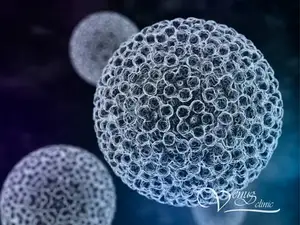
Ingrown hair: causes and treatment
Ingrown hair - ingrowth of the free edge of the hair into the skin with further formation of compaction (inflammation); development of hyperpigmentation and scarring is possible.
Synonyms: pseudofolliculitis, Pseudofolliculitis barbae.
Why does hair grow in?
Everyone at least once in their life has faced the problem of ingrown hair. The main reason is shaving. It occurs in people with coarse, frizzy hair, most commonly in people with darker skin types, as these people genetically have coarse and frizzy hair. After shaving, the free edge of coarse curly hair can bend to reverse its growth direction and grow into the skin to form seals. Seals are an inflammatory infiltrate around the hair that can become inflamed.
Where does an ingrown hair appear?
Ingrown hairs appear after shaving. Often found on the neck of men, in the armpits and in the bikini area, because in these areas the hairs are stiffer and curly. In the bikini area, they are found in 99% of people.

In the bikini area, the hairs have structural features, usually coarse and curly hair. Frequent shaving and constant trauma to the skin with underwear leads to prolonged inflammation or irritation in this area.
Ingrown hair complications
Ingrown hairs cause inflammation, which manifests itself in the form of swelling, redness and thickening of the skin. Inflammation in the skin can lead to age spots on contact with the sun. Age spots are especially common in the bikini area. When visiting a solarium or sunbathing on the beach, we constantly shave our hair. Ingrown hair + inflammation + sun damage can lead to pigmentation in the bikini area. Such age spots can persist for a long time, as a rule, they disappear on their own within a year.
Acne keloidalis Nuchae
Keloid-like acne occurs in African Americans and is characterized by follicular papules and lumps on the occipital scalp. This can lead to the formation of keloid scars. In the early stages, areas with ingrown hairs are clearly visible and laser hair removal is most effective during this period. An ingrown hair, like a foreign body, over time causes changes in the skin, leading to a decrease in growth and the formation of scars in the affected area. Treatment of keloid-like acne can be divided into two directions: correction of existing skin scars and prevention of new ones. An effective method for acne keloidalis is laser hair removal. The main goal of laser hair removal in this case is to destroy the ingrown hair and slow or stop the growth of new hairs, which will reduce the appearance of new scars. The prognosis for keloid-like acne is favorable with timely diagnosis and timely treatment.
Treatment for ingrown hairs
- Laser hair removal as the most radical method of treatment. After laser hair removal, hair growth completely stops and the patient gets rid of the problem of ingrown hair forever.
- Ingrown hair prevention creams remove excess corneous cells and improve permeability the mouth of the skin to make it easier for the hair to come to the surface. To do this, fruit acids (lactic, malic, citric, kojic, etc.) are added to the creams, which remove the excess of dead cells and the growing hair freely leaves the mouth.
- Waxing rarely leads to ingrown hairs, so many experts recommend waxing instead of shaving in areas where there is a tendency to ingrown hairs.
For ingrown hair: home treatment
In case of ingrown hairs, it is better to consult a specialist - a dermatologist.
- When shaving, make sure that the direction of movement is against the growth of the hair, then the hair will be "pointed" in the right direction. Do not press the razor too tightly against your skin. The chance of ingrowth will be lower.
- Moisten both skin and hair liberally before shaving, apply an emollient shaving cream. This makes the hair more elastic and may reduce the risk of ingrown hairs.
- Before shaving, scrub the area you wish to shave. This will help remove excess horny cells from the skin's surface and reduce the chances of ingrown hairs.
- If there is an inflamed bump and the hair is visible through the skin, then you can try to remove the hair with tweezers. Rub the skin and tweezers liberally with the chlorhexidine solution. Try to grab the hair with tweezers and pull it out gently. Do not use scissors or nippers for these purposes, as their sharp edges can cut the hair and small pieces remain in the skin. Treat the wound with chlorhexidine or iodine.
- Application of vinegar solution. Dilute 1 part vinegar with 1 part water. Dampen the sponge and apply the lotion for 10 minutes. Then wipe the treated skin dry. The vinegar solution has an antibacterial effect and exfoliates dead skin cells from the surface of the skin, like creams to prevent ingrown hairs. ATTENTION: do not apply the lotion for more than 10 minutes, do not apply plastic wrap, etc. over the lotion. This could cause burns.
- Salicylic acid can also be used to rub down ingrown hairs. It has antibacterial and exfoliating properties.









